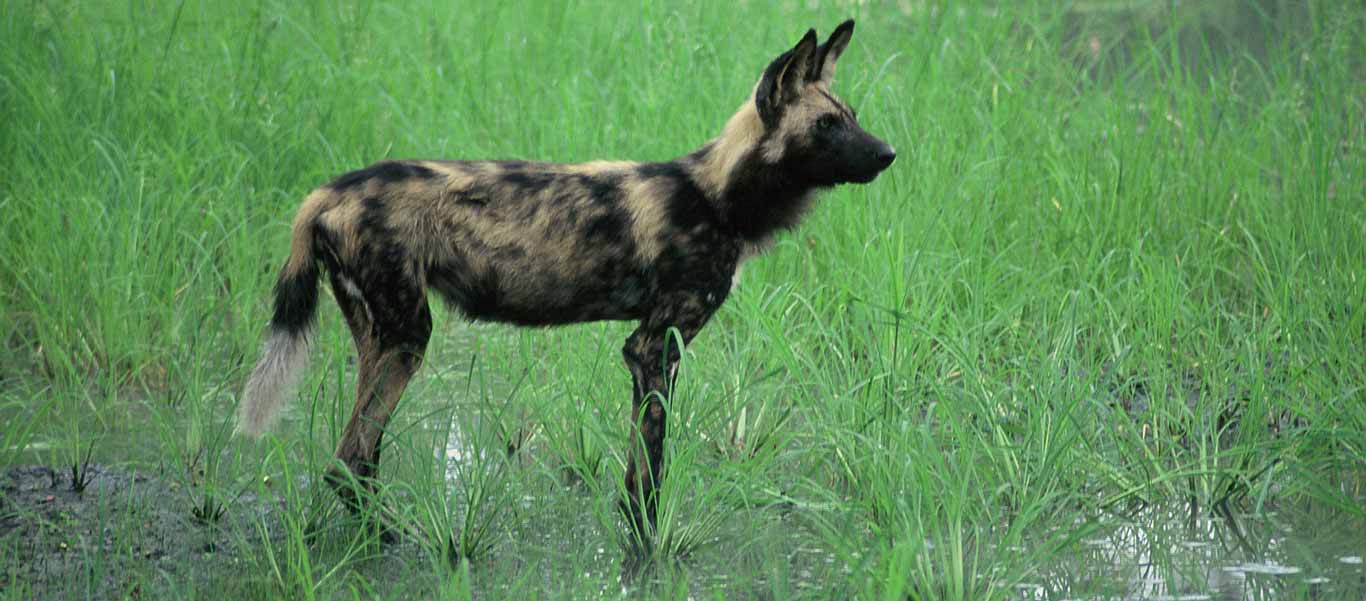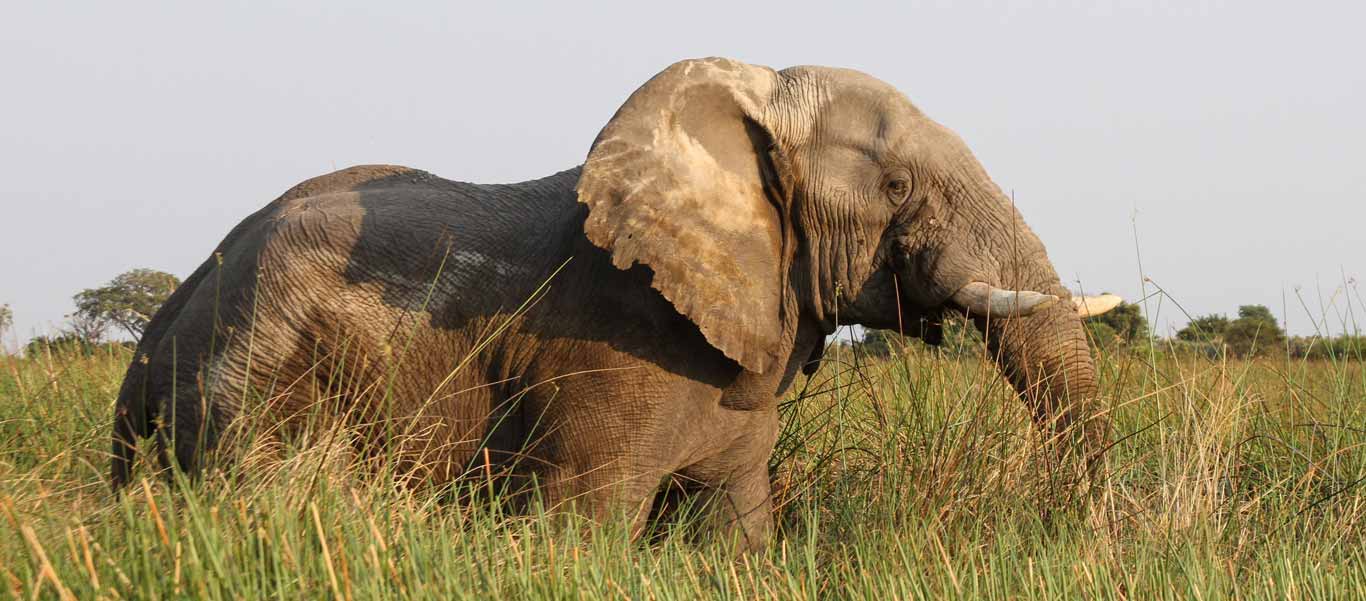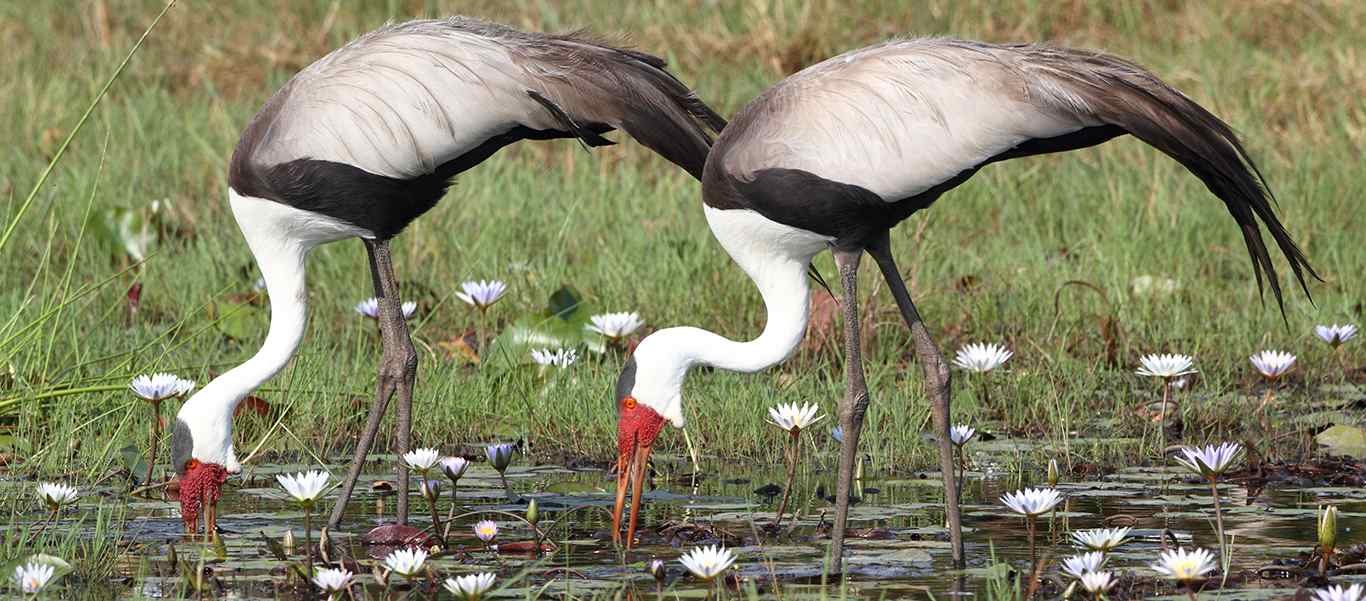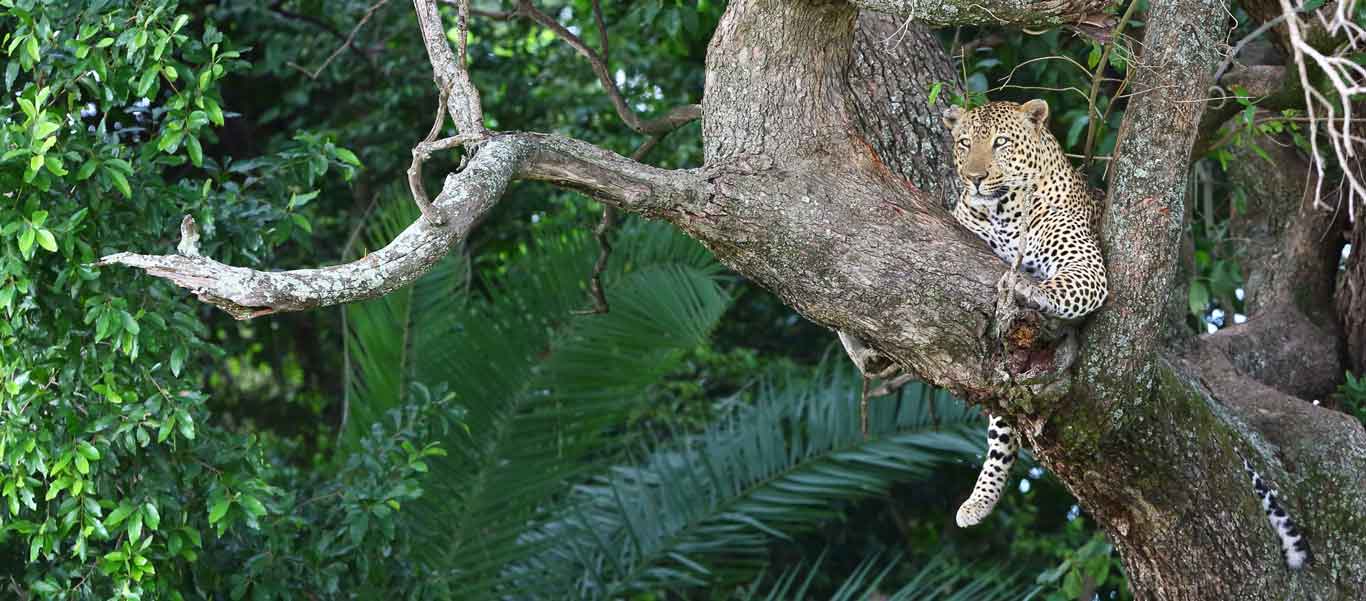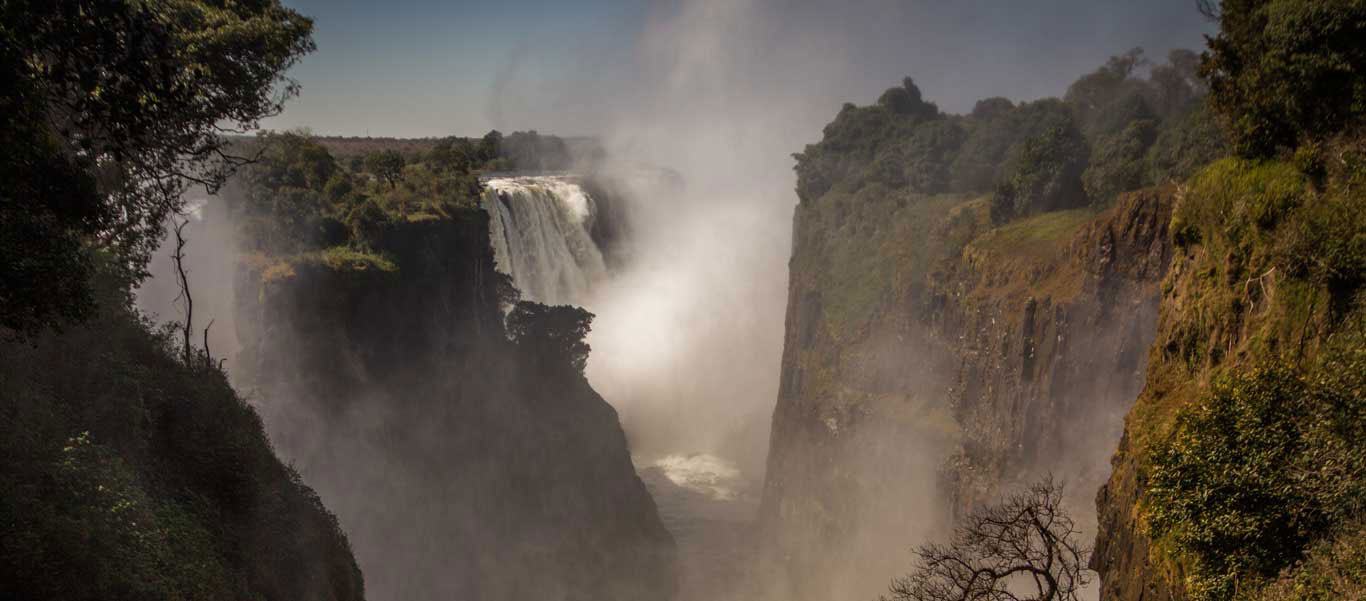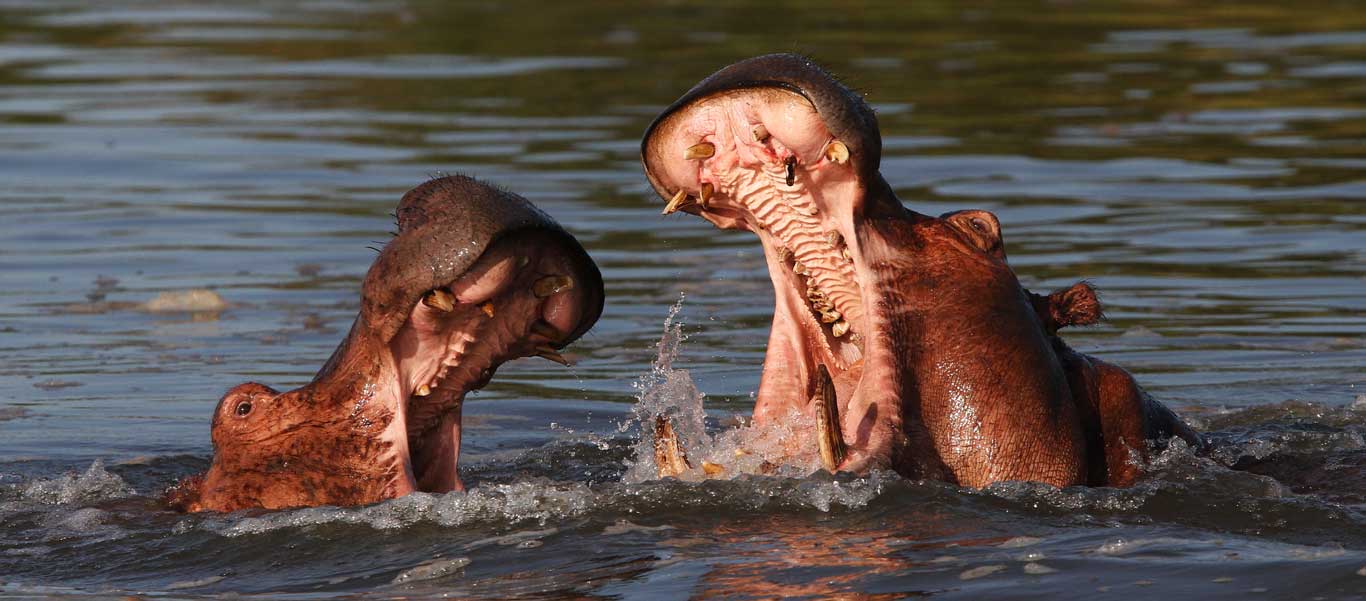Green Botswana
April 5 – 17, 2026
Botswana Green Season Safari
Botswana’s green season—when the air is cleaner, the colors are richer, and the babies are everywhere. After the rains, life explodes in the once-monochrome, semi-desert landscape of the Kalahari. Flowers spring forth from the sand, and crusty saltpans turn into shimmering wetlands full of honking water birds and colorful migratory species. The largest gathering of buffaloes in Africa thrives at Mababe, an area of tremendous ecological significance and where few have ventured until very recently. Droves of wildebeest and zebra wind their way through the Makgadikgadi grasslands. Water-adapted antelope such as Sitatunga and Red Lechwe take to the floodplains of the Okavango Delta. And with all this game, predators are never far away. The legendary Kalahari Black-maned Lion, Black-backed Jackal, Leopard, Cheetah, and African Wild Dog are all on the hunt, making the green season the best time to watch the great “circle of life” in action. Join Apex on our Botswana Green Season Safari as we take in the sheer abundance of life during Botswana’s most productive and vibrant time of year.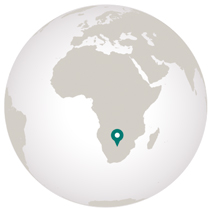
Destinations
- Travel by Air
- Travel by Road
- Travel by Boat
- Travel by Bullet Train
- Travel by Rail
- Travel by Dog Sled
-
Arrive Johannesburg
Arrive in Johannesburg, South Africa. Meet your expedition leaders and fellow travelers at a welcome dinner and overnight at the InterContinental O.R. Tambo Airport Hotel.
-
Maun / Makgadikgadi Pans National Park
Transfer to the airport this morning for your scheduled flight to Maun, Botswana. Once through customs and immigration, board your light aircraft flight to San Camp at the eastern edge of Makgadikgadi Pans, the world’s largest saltpan landscape. Normally a stark white desert, it fills with grass and wildflowers during the green season, inviting Africa’s longest zebra migration, as well as Oryx, Springbok, Aardwolf and Brown Hyena. Dinner and overnight at San Camp.
-
Makgadikgadi Pans National Park
Rise early and spend the morning alongside the habituated, and incredibly friendly, Meerkats of San Camp. Watch as they stick their noses out of their burrows to sniff for signs of danger, then emerge and position themselves with their chests to the rising sun to shake off the night’s cold. Sit with them long enough, and they may use your head as a sentry point to watch for eagles, their greatest predator. Later, take a game drive to Nwetwe Pan, admiring the magnificent ancient Baobabs along the way. Nwetwe is one of southern Africa’s most important Lesser and Greater Flamingo breeding sites. Pink clouds of flamingoes fill the air this time of year, as Ostriches, korhaans and Secretary Birds scour the grass below. See great herds of Wildebeest, zebra and Impala grazing, while Lion, Cheetah, Leopard, Jackal and hyena lurk nearby, awaiting their opportunity. Dinner and overnight at San Camp.
-
Mababe
This morning fly back to Maun, then transfer to a helicopter to fly to the remote and untouched area of Mababe and Mokete Camp, located south of Chobe National Park and east of Moremi Game Reserve. The permanent marshland and enormous grassland of this area are fed by the Mababe River and seasonal draining of the Okavango Delta. Dinner and overnight at Mokete Camp.
-
Mababe
Mababe is an area of tremendous ecological significance, made up of three key habitats: grassland, wetlands, and mopane woodland. You’ll spend two full days being awed by the majesty and diversity of this remote wilderness. Lions are seen throughout the day, while a high density of hyenas are in constant competition with Cheetahs, African Wild Dogs, Bat-eared Foxes, and jackals, to name a few. Leopard and numerous woodland species make the mopane belt to the east their home. This private wilderness area harbors herds of buffalo in the thousands—the largest gathering in Africa—alongside abundant predators, massive elephant herds, and prolific bird life.
Aptly named “Mokete” (meaning “feast”), the camp embodies an abundance of wildlife, varied landscapes, and pristine natural beauty. Here you’ll encounter truly remarkable vistas, unlike any other wilderness areas in northern Botswana. Dinners and overnights at Mokete Camp.
-
Okavango Delta
Fly today to the wondrous wetland within the Kalahari, known as the Okavango Delta. Produced by seasonal flooding, the delta is comprised of nearly 6,000 square miles of water channels, lagoons, and islands. Declared one of the Seven Natural Wonders of Africa in 2013, it boasts some of the densest wildlife concentrations on the continent. Large numbers of more widely distributed mammals and birds occur alongside specialties that are rarely encountered elsewhere in Africa, such as the charismatic and endangered African Wild Dog, Zambezi Sitatunga, and Wattled Crane. Wilderness Chitabe Camp is located in a private concession bordered on the north by the famed and unfenced Moremi Game Reserve. The dramatic mix of Kalahari and Okavango habitats boasts consistent predator-prey interaction. Dinner and overnight at Wilderness Chitabe Camp.
-
Okavango Delta
Enjoy morning and late afternoon game drives. The area will be rife with palatable grasses and productive Mopane and Acacia woodlands, which lure many species of plains game, including elephant, giraffe, zebra, Sitatunga, Red Lechwe, Tsessebe, Impala, Hippo, and, on rare occasion, White Rhino. The large prey densities make Chitabe a stronghold for African Wild Dog, Lion, Cheetah, and Leopard. The variety of bird life is impressive, with woodland specialties such as Bateleur Eagle, Red-crested Korhaan, Southern Yellow-billed Hornbill, Dickinson’s Kestrel, Meyer’s Parrot, and the glamorous Crimson-breasted Shrike, and a vast array of wetland birds, such as the highly localized Slaty Egret, African Skimmer, Pel’s Fishing Owl, and Black-chested Snake-eagle on the waterways. Dinners and overnights at Wilderness Chitabe Camp.
-
Linyanti Reserve
It is farewell to the Okavango as you fly north to one of Botswana’s most remote and inaccessible regions, skirting its northern border with Namibia. The Linyanti is a vast private reserve on Chobe’s western boundary, covering over 30,000 acres of lagoons and steadily flowing rivers flanked by riverine forests of majestic Jackalberry and Sausage Trees merging into open grasslands. The main attraction this time of year is the staggering density of the elephant population. The Linyanti also has high concentrations of giraffe, which love to feed on the abundant Acacia trees along the floodplains. Rarer species such as Sable and Roan Antelope are regular sights here, while Cheetahs find the open areas of the Savuti Channel perfect for running down their prey. The Savuti Channel, which undergoes intermittent wet and dry periods, has been flowing anew since 2008, attracting Hippos, crocodiles, and myriad birds, including dainty African Pygmy Goose, Rufous-bellied Heron, and Hartlaub’s Babbler. Dinner and overnight at Linyanti Tented Camp.
-
Linyanti Reserve
Today. soak up the Linyanti’s exquisite scenery and commune with the elephants. Along with a morning game drive to seek out the area’s Lion, Leopard, Cheetah, and African Wild Dog, a night drive will reveal a whole separate array of nocturnal species, such as Lesser Bushbaby, Spring Hare, Large Spotted Genet and, if you’re lucky, the elusive Aardwolf or Serval. The birding is spectacular, with such specialties as Slaty Egret, White-rumped Babbler, and Wattled Crane. A special feature at Linyanti is the log-pile hide where you can sit quietly and watch hundreds of buffalo and elephants moving along the waterways. Overnight at Linyanti Tented Camp.
-
Victoria Falls
After breakfast, fly due east to Kasane, then hop into vehicles for an hour-long drive that takes you across the border to Zimbabwe. Settle into Old Drift Lodge, perched on the banks of the Zambezi River, upstream from Victoria Falls. A glance across the Zambezi may well reveal great pods of hippo or herds of elephant gathered at the water’s edge. This evening, gather with your expedition leaders and fellow travelers for a farewell dinner. Listen for the grunts of Hippos, the trumpet of elephants and the call of fish eagles as you drift off to sleep tonight. Dinner and overnight at Old Drift Lodge.
-
Depart Victoria Falls
Before breakfast, take in the grandeur of Victoria Falls, or Mosi-oa-Tunya (The Smoke That Thunders) in the local Tonga language. Venture close enough to feel its spray, and marvel over the sheer size of the world’s largest sheet of falling water. After brunch, transfer by vehicle to the Victoria Falls Airport for your flights home.
Details
- April 5 – 17, 2026
- Leaders Marco Tonoli & Richard Visser
- $26,970 Per Person Rate
- $32,230 Solo Rate
- 13 days Trip Length
- 12 guests
- Johannesburg Start
- Victoria Falls End
Call us to reserve your spot on this exciting expedition!


